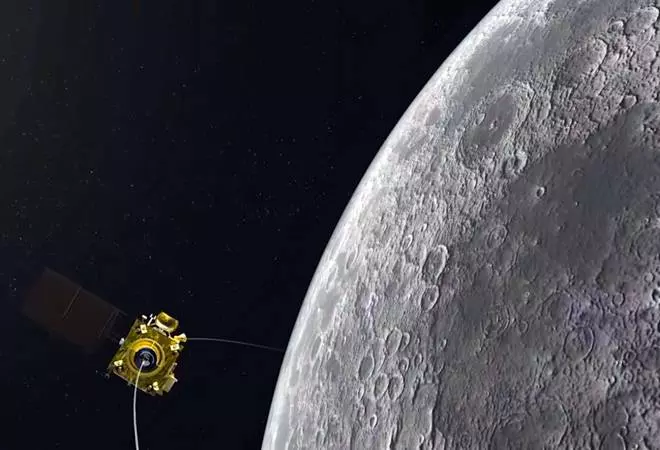
Why ISRO's space missions have Sanskrit names
Intricate structure and syntax of ancient language is seen to make it well-suited for communicating scientific concepts and procedures

The success of Chandrayaan-3 has gripped the nation’s attention with its remarkable landing near the moon's southern pole receiving a lot of praise worldwide.
The successful landing on the dark side of the Moon shows how India is exploring space in a cost-effective way and is also motivating other countries that are interested in lunar missions.
Sanskrit takes centrestage
This historic effort also showcases the use of one of the world's oldest languages: Sanskrit. With its origins in Hinduism, many elements of the Chandrayaan-3 mission are named in Sanskrit.
S Somanath, the head of the Indian Space Research Organization (ISRO), mentioned earlier this year in a Hindustan Times report that Sanskrit literature possesses great wealth in its authentic and philosophical expressions. According to him, the intricate structure and syntax of this ancient language make it well-suited for communicating scientific concepts and procedures.
The term ‘Chandrayaan-3’ translates to ‘mooncraft’ in Sanskrit ('Chandra' meaning moon and 'yaan' meaning craft or vehicle), a fitting name for a mission heading to the moon.
Similarly, 'Pragyan', the six-wheeled rover currently moving traversing the lunar surface to study the soil, is named after the Sanskrit word for "wisdom."
A tribute to Vikram Sarabhai
The lander of Chandrayaan-3, known as ‘Vikram’, derives its name from Sanskrit, word ‘valour’. This title carries immense importance as it pays tribute to the legendary scientist Vikram Sarabhai, who is regarded as the visionary behind India's space program.
Another Sanskrit-named component is the liquid-fuelled rocket engine called Vikas (‘progress’ in Sanskrit). This engine played a crucial role in propelling the core stage of the three-stage rocket that placed the Chandrayaan-3 spacecraft into orbit earlier in July this year.
Interestingly, 'Vikas' is frequently interpreted as a fusion of Sarabhai's full name — Vikram Ambalal Sarabhai.
Throughout its history, ISRO has shown a penchant for drawing inspiration from Sanskrit while christening its spacecraft.
This was evident in their Mars orbiter ‘Mangalyaan’, which took flight in 2013 and examined the terrain and atmosphere of Mars from a vantage point in orbit. Unfortunately, it lost communication last year due to battery depletion.
In the upcoming days, India is poised to launch its first solar study mission, Aditya-L1 (named after the Sanskrit word for "sun"). This solar space probe is scheduled to launch on September 2 from the Satish Dhawan Space Centre in Sriharikota, Andhra Pradesh.
Human spaceflight in the works
In the foreseeable future, India has its maiden human spaceflight attempt in the works called Gaganyaan ('celestial vehicle'). This programme intends to send a minimum of three astronauts into space, with the earliest launch projected for 2025 or later.
As mentioned in the mission blueprint, the initial phase will involve uncrewed test flights, during which a humanoid robot named 'Vyommitra' (meaning ‘space's friend’) will be launched into space to simulate astronauts.
Vyommitra, though lacking legs, boasts of robotic arms and a lifelike human face, complete with speech capabilities. This robot is expected to oversee a range of experiments on trial flights.
As India continues to make its mark in the field of space exploration, there's a revival of interest in Sanskrit, a language that experienced a decline in usage after the 13th century.

